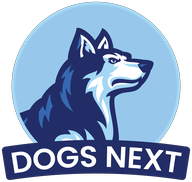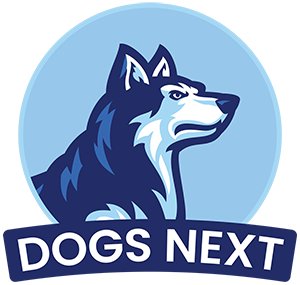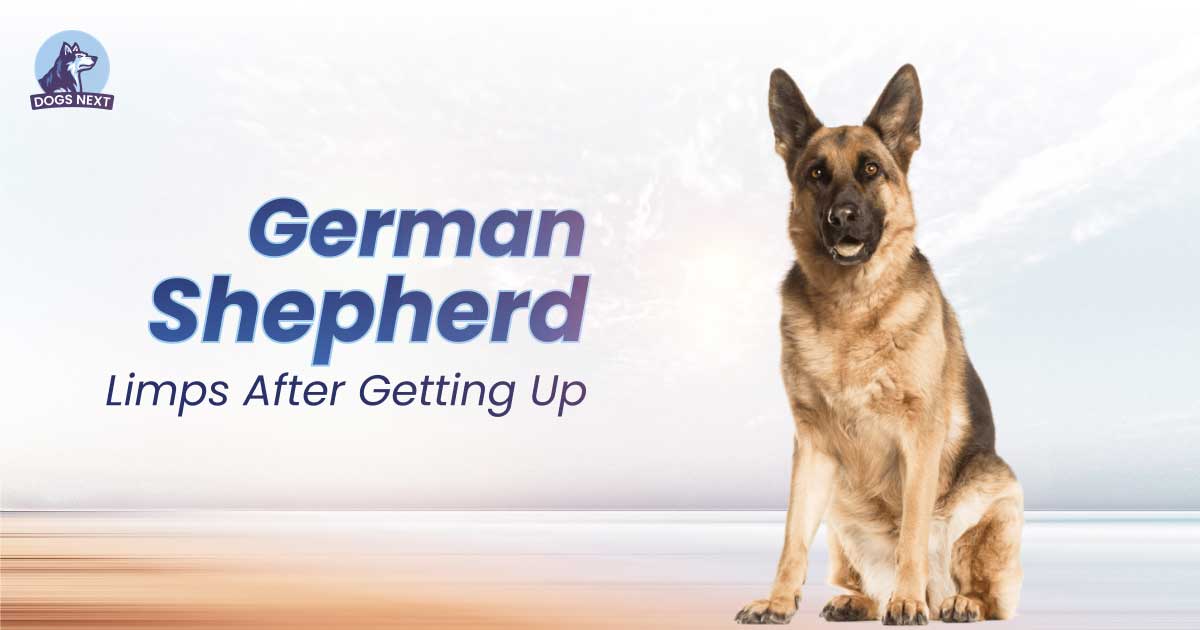German Shepherds are prone to joint and mobility issues as they age. Arthritis and hip dysplasia are common causes of limping in these dogs. Regular veterinary check-ups help in early detection and management of these conditions. Exercise, a balanced diet, and weight management are crucial for maintaining joint health.
Supplements like glucosamine and chondroitin can also support joint function. If you notice persistent limping, immediate veterinary consultation is essential. Early intervention can improve your dog’s quality of life. Proper care and timely treatment ensure that your German Shepherd stays active and healthy.
Common Causes Of Limping In German Shepherds
German Shepherds are known for their intelligence, loyalty, and agility. But like any breed, they can face health challenges. One common issue is limping after getting up. This can be concerning for pet owners. Understanding the common causes of limping in German Shepherds helps in early detection and treatment.
Age-related Issues
As German Shepherds age, they may experience joint problems. Arthritis is one of the most common age-related issues. It leads to stiffness and pain in the joints. Older dogs may have difficulty getting up or show signs of discomfort.
Some signs of arthritis include:
Aging can also lead to degenerative myelopathy. This is a spinal cord condition that affects coordination and mobility. German Shepherds with this condition may drag their back legs or stumble frequently.
| Age | Common Issues |
| 8+ years | Arthritis, Degenerative Myelopathy |
Injury And Trauma
Injuries and trauma can cause limping. German Shepherds are active and may injure themselves while playing or running. Sprains and strains are common injuries. These occur when a ligament or muscle is overstretched.
Symptoms of injury include:
Fractures and dislocations are more serious injuries. They often result from accidents or falls. A German Shepherd with a fracture may not put any weight on the injured leg. It’s important to seek veterinary care immediately if you suspect a severe injury.
Infections And Inflammation
Infections and inflammation can lead to limping. Bacterial infections in the joints can cause pain and swelling. One common infection is septic arthritis. This occurs when bacteria enter the joint through a wound or surgery.
Signs of septic arthritis include:
Lyme disease is another infection that affects joints. It is caused by ticks and leads to intermittent limping. Inflammation from immune-mediated diseases also causes joint pain. Regular check-ups and vaccinations help prevent infections.
Structural And Genetic Conditions
Some German Shepherds suffer from structural and genetic conditions that cause limping. Hip dysplasia is a common genetic disorder. It occurs when the hip joint doesn’t fit properly, leading to arthritis.
Signs of hip dysplasia include:
Elbow dysplasia is another structural condition. It involves abnormal development of the elbow joint, causing pain and lameness. Regular screening and breeding practices help reduce the risk of genetic conditions.
Other Possible Causes
There are other causes of limping in German Shepherds. Obesity puts extra strain on the joints, leading to pain and stiffness. Maintaining a healthy weight is crucial for joint health.
Nutritional deficiencies also contribute to joint problems. Ensure your dog gets a balanced diet rich in essential nutrients. Nerve damage from spinal issues can cause limping too. This may result from injuries or degenerative diseases.
Common signs include:
Regular veterinary check-ups help identify and manage these causes effectively.
Diagnosing The Cause
Seeing your German Shepherd limp after getting up can be concerning. Understanding the root cause of this issue is crucial for effective treatment. This section delves into diagnosing the causes behind this common problem in German Shepherds.
Identifying Common Symptoms
When your German Shepherd limps, observe the specific symptoms. Watch for signs like:
Consulting A Veterinarian
Always consult a veterinarian for an accurate diagnosis. The vet might perform a physical examination and ask about the dog’s medical history.
Conducting X-rays And Imaging
Sometimes, X-rays or other imaging tests are necessary. These tests help identify issues like:
Analyzing Blood Tests
Blood tests can reveal underlying health problems. Common blood tests include:
Assessing Joint Fluid
Evaluating the joint fluid can help diagnose joint diseases. The vet may extract a sample for analysis.
Monitoring Activity Levels
Track your dog’s activity levels. Reduced activity can indicate pain or discomfort. Note any changes in behavior or movement.
Using A Table For Quick Reference
| Diagnostic Method | Purpose |
| Physical Examination | Identify visible signs of discomfort |
| X-Rays/Imaging | Detect bone and joint issues |
| Blood Tests | Identify underlying health problems |
| Joint Fluid Analysis | Diagnose joint diseases |
Treatment Options
German Shepherds are known for their loyalty and strength. But sometimes, these majestic dogs may experience limping after getting up. Understanding the treatment options is crucial for their well-being. This section explores various treatment options to help your furry friend recover.
Medical Treatments
Medical treatments are often the first line of defense for a limping German Shepherd. These treatments can provide immediate relief and address underlying issues.
| Treatment | Purpose | Duration |
| Pain Relief Medications | Reduce pain and inflammation | Short-term |
| Joint Supplements | Improve joint health | Long-term |
| Antibiotics | Treat infections | Short-term |
Consult your vet for the best medical treatment plan for your dog. They can tailor the treatment to your dog’s specific needs.
Physical Therapy
Physical therapy is a great way to help your German Shepherd regain strength and mobility. These therapies focus on improving muscle function and reducing pain.
Physical therapy can be done at specialized centers or at home with proper guidance. Consistency is key for effective results.
Surgical Interventions
Surgical interventions might be necessary for severe cases. These procedures can correct structural issues and improve your dog’s quality of life.
| Surgery Type | Purpose | Recovery Time |
| Joint Replacement | Restore mobility | Several months |
| Arthroscopy | Diagnose and treat joint issues | Few weeks |
| Osteotomy | Relieve joint stress | Several months |
Surgery should always be considered a last resort. Discuss all options with your vet to make an informed decision.
Home Care And Management
Home care plays a vital role in your German Shepherd’s recovery. Simple adjustments can make a big difference in their comfort and mobility.
Incorporate these tips into your daily routine:
- Ensure your dog has a comfortable sleeping area.
- Monitor their weight and adjust their diet as needed.
- Engage in gentle exercises like swimming or short walks.
Home care and management can significantly improve your dog’s quality of life. Consistency and attention to detail are key.
Preventive Measures
Watching your beloved German Shepherd limp after getting up can be distressing. It’s important to understand the causes and take preventive measures to ensure your dog’s health and mobility. Proper care can help prevent limping and maintain your dog’s overall well-being.
Regular Exercise
Regular exercise is crucial for German Shepherds. Consistent physical activity strengthens their muscles and joints, reducing the risk of injuries. Daily walks, playtime, and interactive games are excellent options.
Balanced Diet
A balanced diet is essential for your dog’s health. Ensure your German Shepherd gets a diet rich in proteins, vitamins, and minerals. Omega-3 fatty acids can help maintain joint health.
Weight Management
Maintaining a healthy weight is vital. Excess weight puts stress on the joints, leading to limping. Monitor your dog’s weight and adjust their diet and exercise routine accordingly.
| Food | Benefits |
| Lean Meats | Builds muscle mass |
| Fish Oil | Supports joint health |
| Vegetables | Provides essential vitamins |
Regular Vet Checkups
Regular vet checkups are essential. Early detection of joint issues can prevent severe problems. Schedule annual visits and keep up with vaccinations and health screenings.
Joint Supplements
Joint supplements can be beneficial. Glucosamine and chondroitin are popular choices. Consult your vet before starting any supplements.
Comfortable Sleeping Area
A comfortable sleeping area is important. Provide a soft, supportive bed to reduce pressure on the joints. This can help prevent stiffness and limping after rest.
Avoid High Impact Activities
Avoid high impact activities that can strain joints. Instead, focus on low-impact exercises like swimming. Swimming is excellent for maintaining fitness without stressing the joints.
Proper Grooming
Proper grooming is crucial. Regularly trim your dog’s nails to prevent discomfort and improper gait. Brush their coat to avoid mats and tangles that can affect their movement.
Environmental Safety
Ensure your home environment is safe. Remove hazards that could cause slips or falls. Use non-slip mats on slippery floors to provide better traction.
When To Seek Immediate Veterinary Help
Seeing your beloved German Shepherd limp after getting up can be distressing. While occasional limping might not always be a cause for concern, there are certain signs that require immediate veterinary attention. Knowing when to seek help can make a significant difference in your dog’s health and comfort.
Signs Of Severe Pain
If your German Shepherd shows signs of severe pain, such as whining, yelping, or refusing to move, it’s crucial to contact your vet right away. Severe pain can indicate a serious underlying issue that needs urgent treatment.
Swelling Or Deformity
Noticeable swelling or deformity in the affected limb is a red flag. This could suggest a fracture, dislocation, or severe inflammation. Immediate veterinary intervention is necessary to prevent further complications.
Inability To Bear Weight
If your dog cannot bear weight on the limb or drags it while walking, seek veterinary help immediately. This could point to nerve damage or a severe injury that requires prompt attention.
Sudden Onset Of Limping
A sudden onset of limping without any known cause warrants a visit to the vet. Sudden lameness might be due to acute injuries like sprains, ligament tears, or even infections.
Unresponsiveness To Home Care
If home care measures like rest and cold compresses do not improve the limping within a day or two, it’s time to consult your vet. Persistent limping could indicate a chronic condition that needs professional diagnosis and treatment.
Presence Of Open Wounds
Open wounds or cuts on the limping leg require immediate veterinary care to prevent infection. Ensure your dog receives proper wound care and any necessary medication to promote healing.
| Condition | Immediate Action |
| Severe Pain | Contact Vet |
| Swelling or Deformity | Seek Veterinary Help |
| Inability to Bear Weight | Visit Vet Immediately |
| Sudden Onset of Limping | Vet Consultation |
| Unresponsive to Home Care | Professional Diagnosis |
| Open Wounds | Immediate Wound Care |
Frequently Asked Questions
Why Does My German Shepherd Limp After Getting Up?
A German Shepherd may limp after getting up due to arthritis, hip dysplasia, or an injury. Consult a vet for an accurate diagnosis.
How Can I Help My Limping German Shepherd?
To help your limping German Shepherd, ensure they get rest and avoid strenuous activities. Consult a vet for appropriate treatment.
When Should I Worry About My Dog’s Limp?
If your dog’s limp persists for more than 48 hours, worsens, or is accompanied by other symptoms, consult a vet immediately.
Can Exercise Help My German Shepherd’s Limp?
Moderate exercise can help maintain joint flexibility and muscle strength. However, avoid overexertion and consult your vet for a tailored exercise plan.
Conclusion
Regular vet check-ups are essential if your German Shepherd limps after getting up. Early intervention can prevent serious issues. Pay attention to their diet, exercise, and overall health. Timely care ensures a happy, active life for your furry friend. Always consult your vet for personalized advice and treatment options.

I’m David, an expert contributor and writer, with two furry friends of my own, I know the challenges of raising and caring for dogs. From training to nutrition and health, my goal is to provide valuable insights and advice to help create strong bonds and happy, healthy lives. Find me in Twitter.




